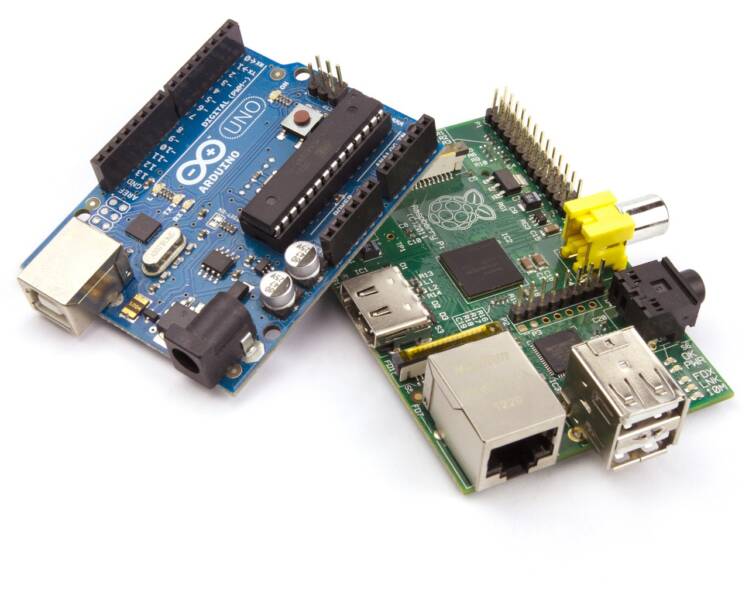Raspberry Pi and Arduino are two of the most popular controller boards on the market. There are a lot of similarities between the two- both were originally created to teach basic computer science in schools, for example.

Since then, they’ve both become popular among hobbyists and professionals alike. However, there are a few key differences between the two, and understanding these differences will help you decide which board is right for you.
What is Arduino?
Developed in Italy, the Arduino is a single-board microcontroller. As a microcontroller, it is used in electronic circuits to perform simple tasks such as controlling a light or motor.
What is a Raspberry Pi?
The Raspberry Pi is a microprocessor based single-board computer developed in the United Kingdom. Unlike the Arduino, the Raspberry Pi is a microprocessor, which means it has basically the same capability as a computer.
Though the Raspberry Pi Pico is a microcontroller, the majority of Raspberry Pi products are microprocessors.
What are the main differences?
The key difference between the two is that the Raspberry Pi is a microprocessor whereas the Arduino is a microcontroller. This means that the Raspberry Pi is essentially a computer; it has its own OS and supports the internet, while the Arduino does not. This also means that Raspberry Pi boards are generally more expensive than Arduino boards.
Since it can support an OS, the Raspberry Pi is a good option for more complex projects, such as equipment monitoring and cameras. A single-board computer, the Pi has everything it needs on one board, including the CPU, wi-fi support and an ethernet port. It can also run many different applications, from email to Microsoft Office, and can run multiple programs at once.
Though it may struggle with heavy workloads, it’s a good option for most complex projects. You can also find a range of extra parts at a Maker Store so you’ll have everything you need to get started on your next project.
The Arduino, on the other hand, is a microcontroller rather than a full computer, which can run one program at a time. This means that it is not as complex as the Raspberry Pi and is therefore a good option for beginners. This lack of complexity also makes the Arduino a cheaper product than the Pi.
Which one is right for me?
That depends on what your project entails. If it’s a complex project like controlling a robot, doing calculations or performing multiple tasks. For these projects you’ll need a fully-fledged computer, so the Raspberry Pi is the best option here.
If it’s for a simple and repetitive task, such as opening and closing doors, switching lights on and off and reading temperatures, the Arduino is the better option. If you’re a beginner looking to learn how to program and you want a cheaper and simpler tool, the Arduino is right for you.
Final thoughts
Ultimately, both boards have their advantages. The Raspberry Pi and the Arduino are two different boards, but which one is right for you depends on your skill level and what you want to use it for.
TechnologyHQ is a platform about business insights, tech, 4IR, digital transformation, AI, Blockchain, Cybersecurity, and social media for businesses.
We manage social media groups with more than 200,000 members with almost 100% engagement.








































